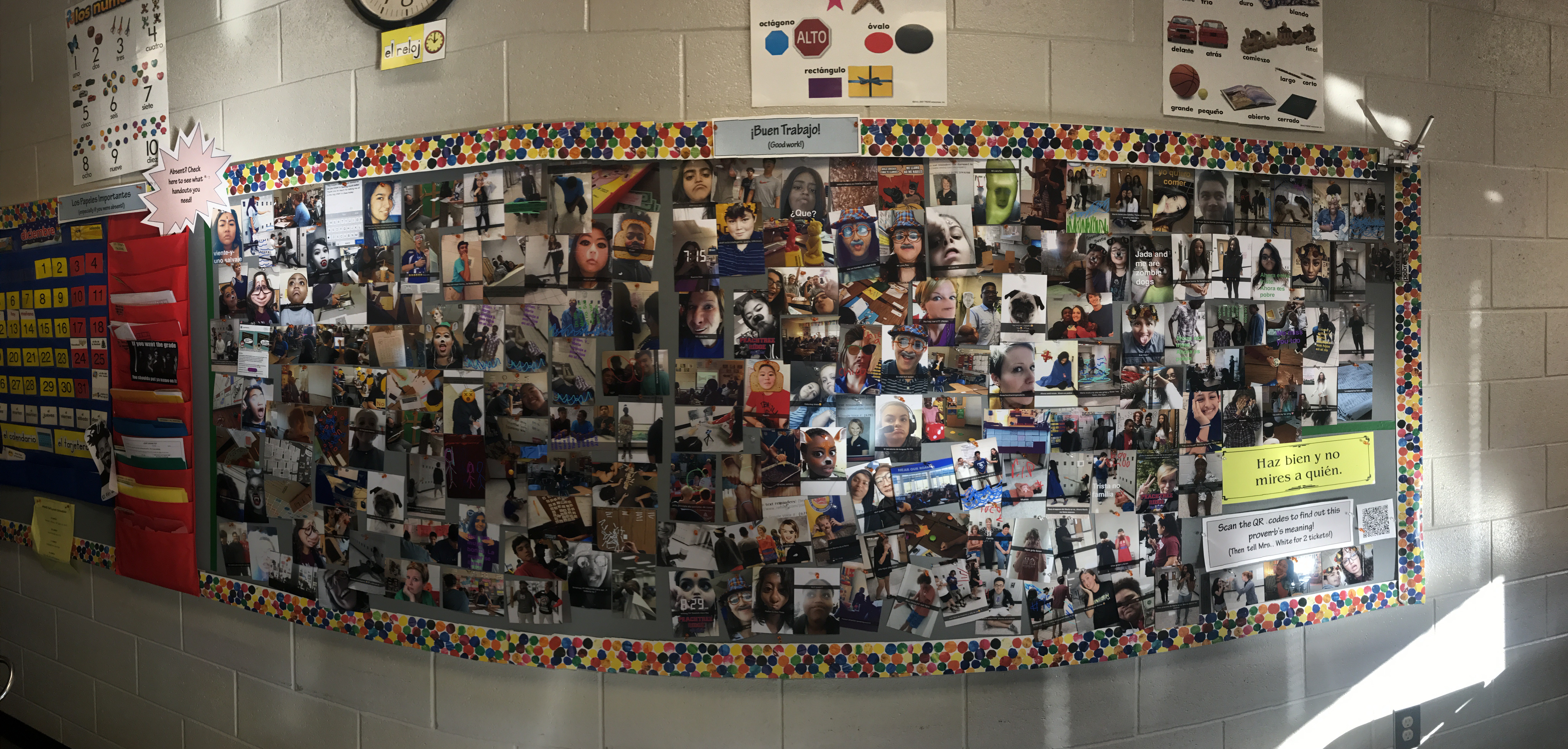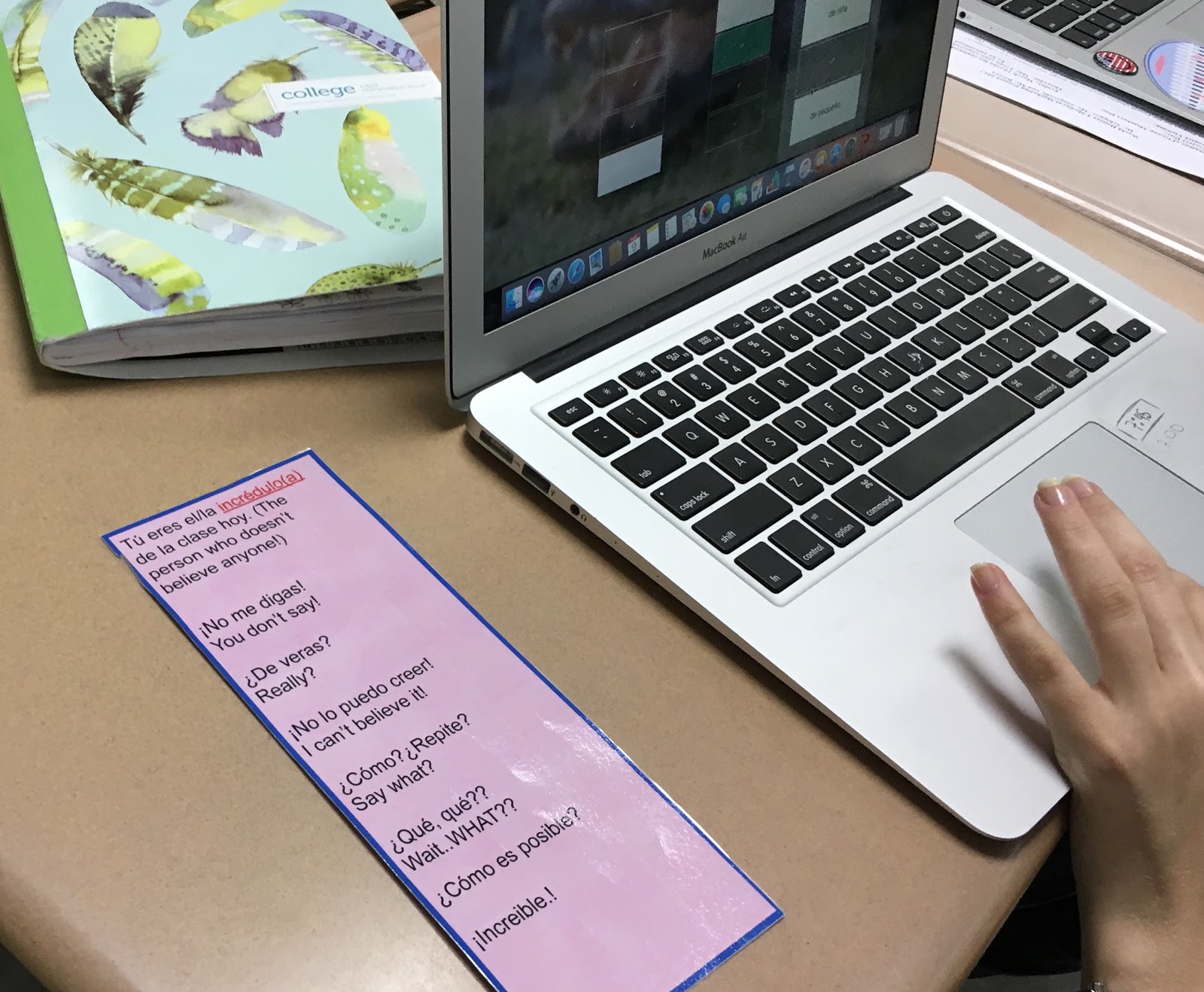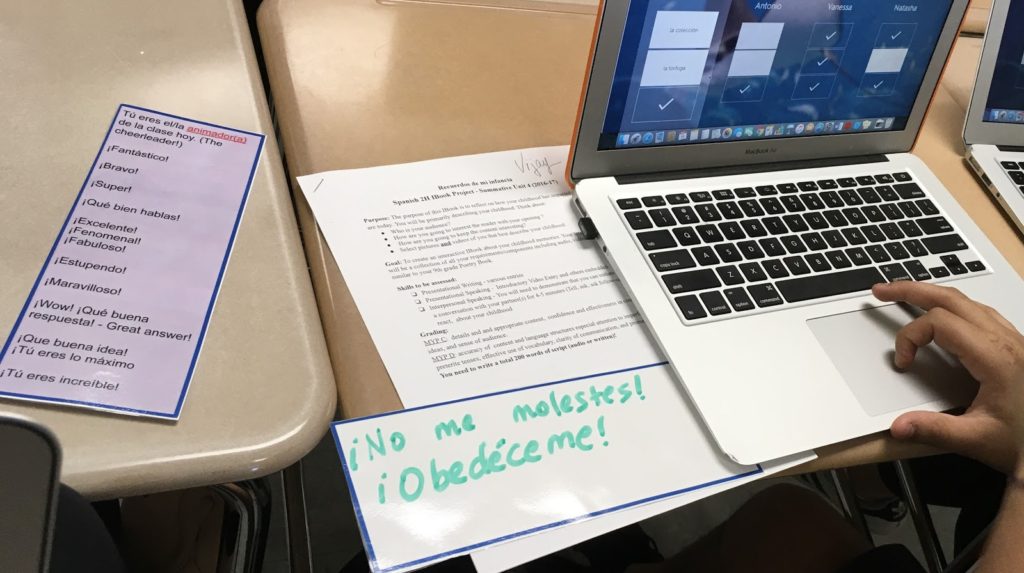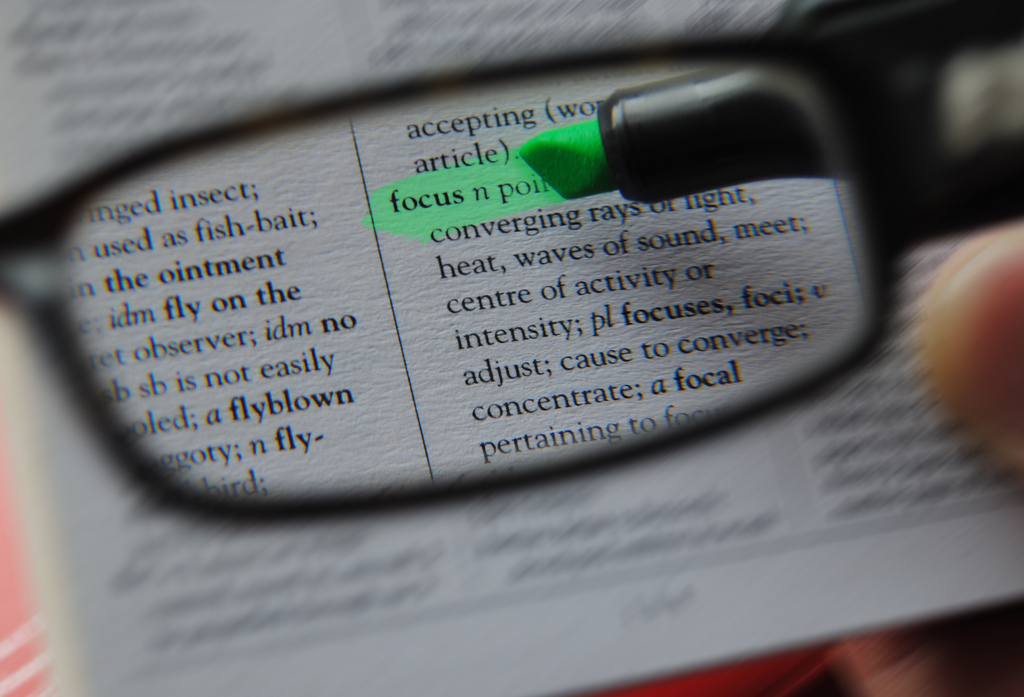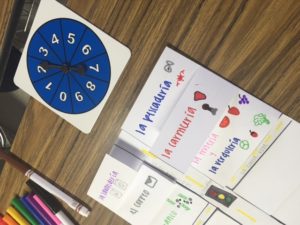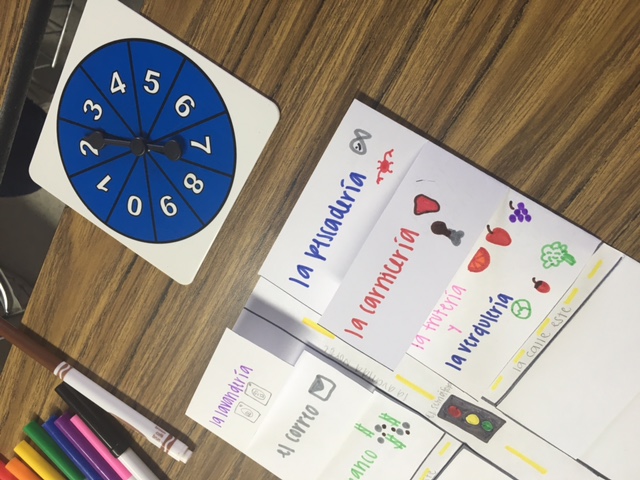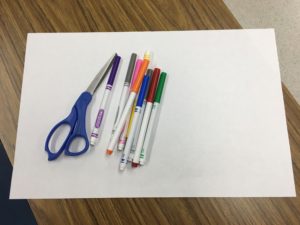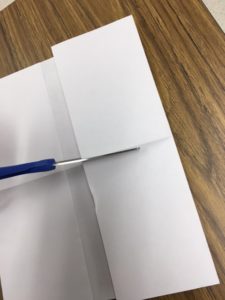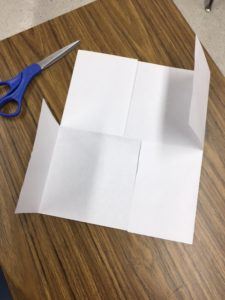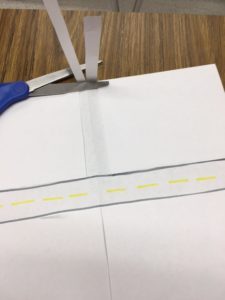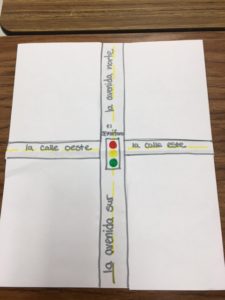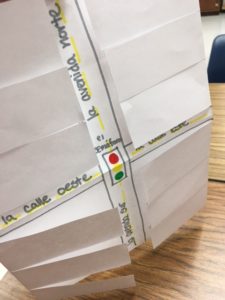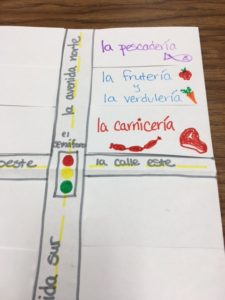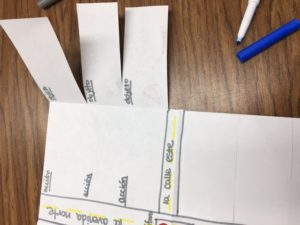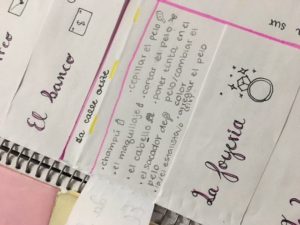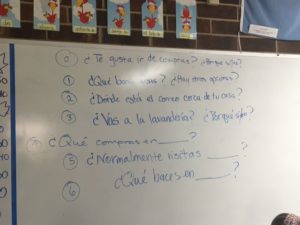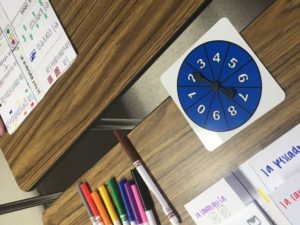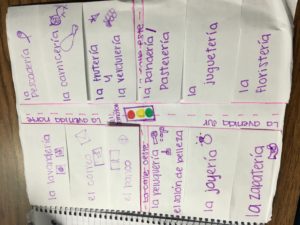Ah, yes, technology.
Coming fresh out of a fabulous #SCOLT17 in Orlando, there were lots of technology ideas that floated around in sessions and conversations. These are great, because we do, indeed, live in the Information Age, a time where we can find nearly any piece of information at our fingertips. Therefore, we should definitely be using them with our students, and, even better, design learning opportunities with the technology in the hands of our students (not just us). Yet, school and how we ‘do‘ school largely hasn’t changed. We still require a certain number of hours, days, and credit hours, and students sit in front of adults all day largely sitting-and-getting, playing the game. We offer professional development sessions for teachers on how to get your students “up and moving” because what learning and learning in classrooms ‘look like’ has been ingrained into us to not include that, necessarily. Don’t believe me? Do a Google image search ‘students learning’ or ‘effective classroom’ or ‘good class’.
Seriously – search that now.
All done? All those fresh, scrubbed, smiling faces; don’t they look like our classrooms every day? Fed, prepared, excited, motivated. Ah yes, our students. Some days, absolutely. Other days? Not so much. Learning is hard work; learning is uncomfortable; learning is personal; learning is rewarding; learning is an EXPERIENCE, period. Students don’t remember activities, necessarily, they remember the holistic picture of a learning experience. Adults are no different; we don’t remember individual placards at the Smithsonian or specific landmark podiums at the Grand Canyon, but we remember those sites as a whole and what those experiences felt like. Students come in and out of our classrooms on a daily and yearly level, and they will remember what they felt like. They will remember what they can do and what they cannot do as a result of that experience, just like any person does in any phase of life, hopefully, as a result of an experience plus reflection.
So, where does technology fit into all of this? We teachers learn about all of these innovative maps, apps, and snaps, but aren’t always charged to reflect on where they fit into our overall educational philosophy. For me, that reflection came last year when a colleague asked me if I had been using the internet that day; it hadn’t been working for him. I responded that no, I hadn’t, but would check when I got a chance. He was dumbfounded, and said, “What? YOU, of all people, haven’t used the internet today?!” In that moment, I realized he perceived me as not just a technology-using teacher, but perhaps a technology-centered teacher, and within that a classroom technology-centered teacher, which isn’t true, and I hadn’t really had to think about those nuances before.
I use very little in-the-moment, in-the-classroom technology on a regular basis, except for in the preparation of lessons, and, because I am a strong believer in the classroom experience, am very anti-phone in the classroom. Sure, the occasional round of Quizlet Live can be rewarding, but only for about 10 min., because after 10 min. or 2-3 rounds, they are done: they’re clicking over to other apps, they’re bored and not moving toward their new group, and the novelty has worn off. Similarly, if you’re telling a story, giving new input, front-loading vocabulary, asking PQA, circling, or any other [insert REALLY input-/focus-heavy activity here], cell phones are a distraction.
I recently gave a session at #CSCTFL17 (here or here) in Chicago on what talk shows and classrooms have in common, and it touches on this: Talk shows have not largely changed in the last century, and we still tune in to watch two people talk. Are those two people on their phones? Are those two people listening to music with one or both earbuds in? Absolutely not. There is still novelty in talk shows, because the guests bring the magic, and everyone is on-board, tuned-in. Our classrooms can be the same way. Students are the guests, they bring the magic, everyone is tuned-in, and technology is capturing the moments, not creating them. We must reflect on if we are welcoming students or tolerating them (no judgment if it’s the latter!). We are the hosts of our own classrooms, the curators of learning: we design and coordinate the experience, and then invite our students to participate and bring the magic. If they are staring at a screen, or secretly texting in their lap, they aren’t 100% present, period.
Steve Allen, Jack Paar, Johnny Carson, Jay Leno, Jimmy Fallon, Ellen DeGeneres: these are all great hosts who, like great teachers, bring their own personality, style, and observations to their work. The format of talk shows, for example, remains largely unchanged: there’s a band, big opening, monologue, interviews, games, laughter, wrap-up. Sound familiar? When studying best practices and brain primacy, a WL classroom should run much the same: big bangs in those first 10 min., a rundown of objectives, transitions, interactions, some humor infused, wrap-up, and so on. The parallels are clear. Don’t have your own personal classroom band? Have some music in the TL playing. Don’t have a sidekick to give you that drum rimshot when you’re funny? Good news: you definitely have a student dying to have the job of sound effects (I bought mine here). Can’t do your monologue because you’re busy with attendance and setup? Class jobs: attendance taker, personal assistant to set out markers and water, prop person to get class ready with the items you’ve listed on a sticky note left for them, hospitality helper offering anyone having a bad day some tea (bought my tea kettle on Amazon), cheerleader encouraging classmates on their bellringer and subsequent warmup, and more. Jimmy Fallon isn’t running like a madman every night adjusting the camera and putting on the final touches for games and interviews, he has people for that. So do we! I have 36+ people in each class dying to participate, not just attend, and class jobs set them up for that. Then, they own those jobs, and procedures, and improve them with new ideas – people don’t renovate what they don’t own, and if students don’t feel ownership in your class, they won’t improve it, they’ll simply put up with it.
Class jobs set students up for structure, and structure (even when it’s loose) begets efficient activity execution. All of those jobs mentioned are experiential, and can’t be done with an app – they rely on FaceTime 1.0, the analog version: real people, real faces, interacting. Technology, however, CAN capture those experiences, and it should. I’d be remiss to pretend as if we don’t live in 2017 where we can take pictures at the drop of a hat, so let’s use that superpower for good and not evil. So, another class job can be the captionist: choose a relevant caption with a current, isolated structure, or story piece, or whatever you want to emphasize, and assign a student to find a picture for that caption, like a caption contest in reverse. They get your device, or a class device (I have an iPad for work use only), and they work to find a moment in class to fit to that caption. Instant engagement. Furthermore, you can have a class photographer in general who sets up your phone/camera on the tripod if you want to record a certain activity, or take pictures of role play, and so on.
To that end, I also like to capitalize on what they’re already using, with the example of our class snapchat (@PRHSspanish). The filters provide plenty of input opportunities for repetition or new vocabulary, for fun/frivolity/enjoyment/entertainment, and its ability to scan QR codes and send messages said pictures allows for scavenger hunts, for example, and interpersonal writing, respectively. My students go on QR code scavenger hunts once a unit or so, and will soon do one that’s more of a race, Amazing Race style. Each QR code may be part of their current story within each themed topic, for example, therefore when they scan them, the text appears. They can then take a picture of their group personifying/acting out what the caption said, and send it back to me. I then have student-generated non-linguistic representations to use with writing prompts, speaking prompts, free writes, blog posts, social media posts (more input!), and much more. Want them reading others’ responses? Save the pictures they send back, head to Walgreens/CVS, plug into the kiosk, and print them out. They’re relatively inexpensive, and can then be part of a gallery wall for students to read, analyze, critique, whatever you want. They’re personalized and therefore compelling, and I didn’t have to make anything new. Again, the host isn’t inventing the guests, he’s bringing them onto the show to share their gifts. The museum curator isn’t creating the art AND displaying it, s/he is designing an exhibit to capitalize on the art’s features. There is a big difference, and teaching in 2017+ won’t be sustainable if teachers keep working harder than the students.
The same can be said for creating electronic art or student blogging – these are great artifacts, and the technology is convenient and useful, but then what? Now what? How can we fuel more organic, experiential learning with these products? And what is the audience, how are we sharing?
For teaching and learning to be effective, information must be memorable and not memorized. Our students must not merely be going through the motions of school, but rather active participants, apprentices in their own learning under the expert, us, their teachers. Technology can facilitate much of this, but it is not the touchstone of a master classroom: personal connections, effective practices, and organic, loving moments are and always will be.
 One thing I have liked to do is try something new during the last grading term of the year in order to work out the bugs, so I could start off knowing how to present it to my students in the fall. I like this type of playing with a new idea because it keeps me on my toes in the profession and helps me develop my craft while helping to keep the students engaged in learning. I’ve had students ask me “Where were these great ideas at the start of the school year?” because they somehow felt cheated that they only got to try something out at the end of the year. Of course, I do various things throughout the year, but my big life-changing ideas, I like to save for the end of the year because I learn from other teachers as I watch and talk and listen and collaborate. I want to have my own spin on something in order to put my own stamp on it. Chef José Andrés uses a separate kitchen as a laboratory in order to experiment with new dishes, and he records his ideas and steps in a journal. Your classroom is your laboratory, and I guarantee you that your students will let you know if your idea was a win or a flop. The key, then, becomes how you tweak it and take it back to them to try again rather than give up.
One thing I have liked to do is try something new during the last grading term of the year in order to work out the bugs, so I could start off knowing how to present it to my students in the fall. I like this type of playing with a new idea because it keeps me on my toes in the profession and helps me develop my craft while helping to keep the students engaged in learning. I’ve had students ask me “Where were these great ideas at the start of the school year?” because they somehow felt cheated that they only got to try something out at the end of the year. Of course, I do various things throughout the year, but my big life-changing ideas, I like to save for the end of the year because I learn from other teachers as I watch and talk and listen and collaborate. I want to have my own spin on something in order to put my own stamp on it. Chef José Andrés uses a separate kitchen as a laboratory in order to experiment with new dishes, and he records his ideas and steps in a journal. Your classroom is your laboratory, and I guarantee you that your students will let you know if your idea was a win or a flop. The key, then, becomes how you tweak it and take it back to them to try again rather than give up.
